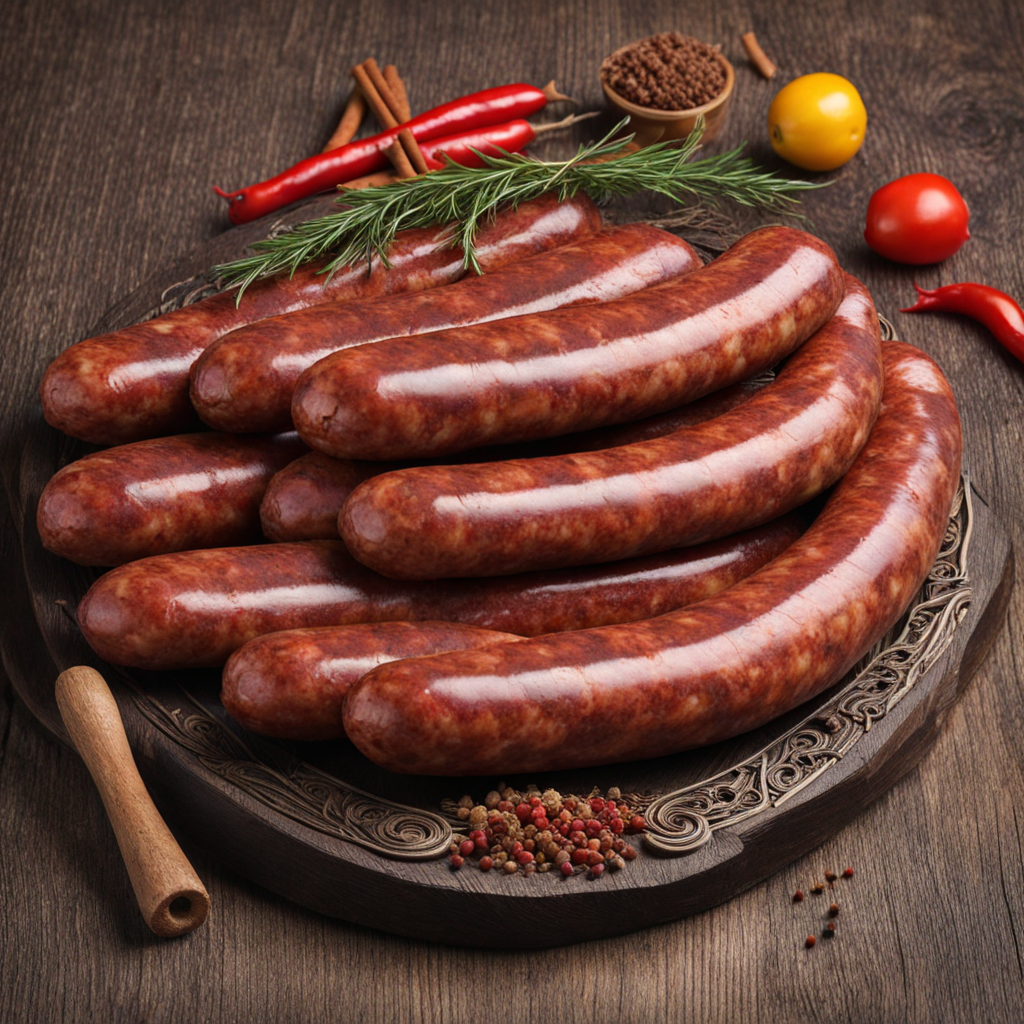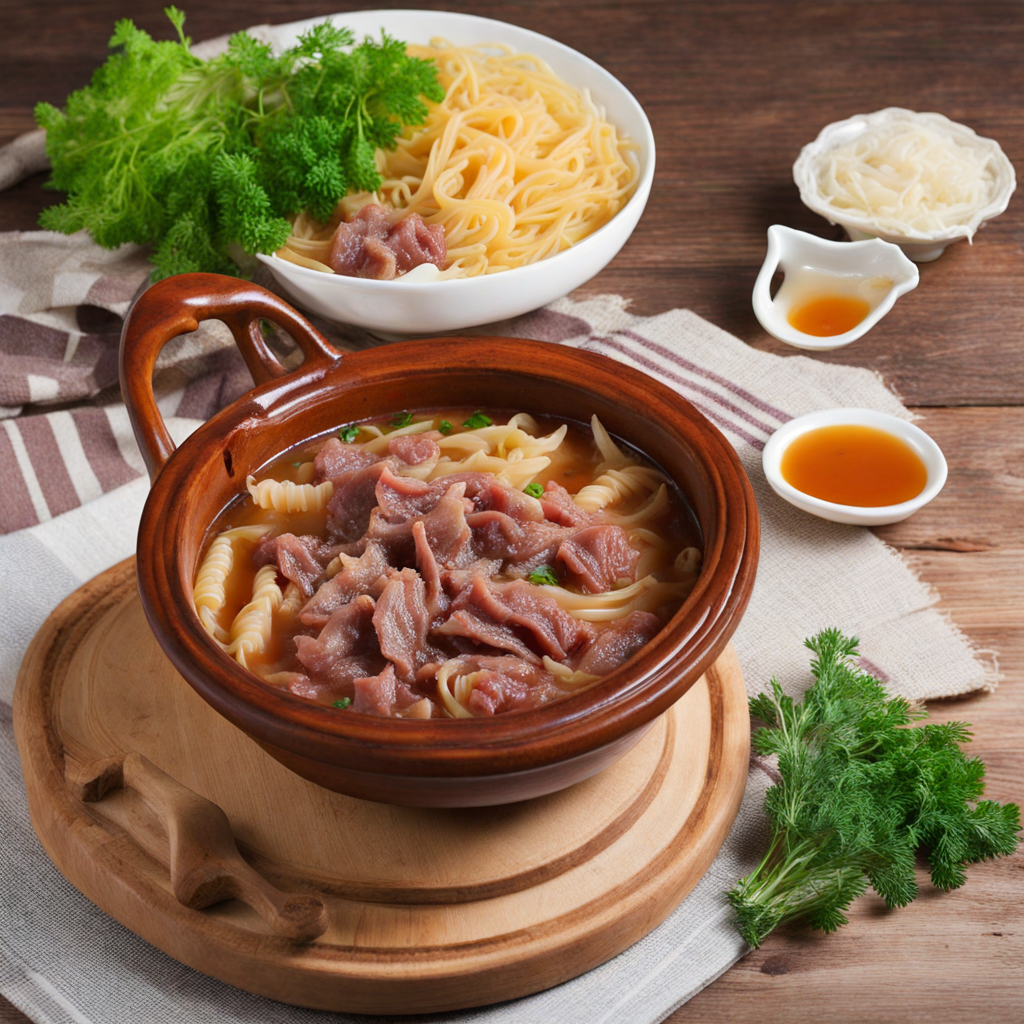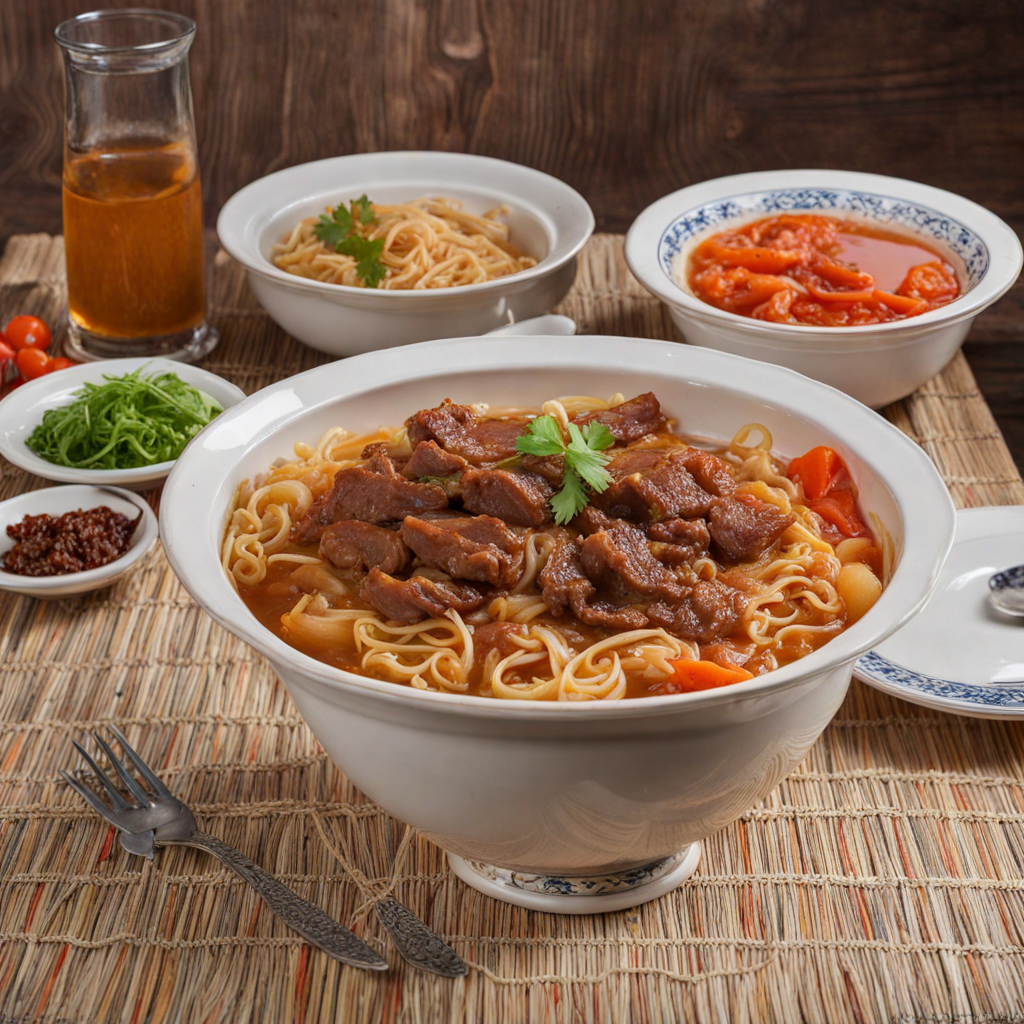Kazy
Kazy is a traditional Kazakh delicacy that showcases the rich culinary heritage of Kazakhstan, primarily made from the meat of horses. This unique dish is often prepared using the horse's rib and loin, which is skillfully seasoned and then encased in the animal's intestines. The preparation involves salting and sometimes spicing the meat with a blend of natural herbs, which enhances its flavor and aroma, resulting in a savory and slightly tangy taste that is truly distinctive. Once stuffed and tied, the kazy is typically boiled or steamed, allowing the flavors to meld beautifully and creating a tender, succulent texture.
How It Became This Dish
Origin of Қазы Қазы, a traditional delicacy of Kazakhstan, has deep roots in the nomadic culture of the Kazakh people. This dish is made from the meat of a horse, specifically the ribs, which are seasoned and then stuffed into the animal's intestines. The origins of Қазы can be traced back to the ancient steppe nomads who relied heavily on horses for sustenance, transportation, and companionship. The horse was not just an animal; it was a symbol of wealth and status among the Kazakh tribes, and as such, every part of the horse was utilized, ensuring nothing was wasted. The preparation of Қазы is both an art and a science. Traditionally, the horse meat is seasoned with a blend of spices, which often includes garlic, salt, and black pepper, enhancing the natural flavors of the meat. The filled intestines are then tied off, forming sausages that are traditionally smoked or boiled. This method of preservation allowed the nomadic tribes to store food for long journeys across the vast steppes. \n Cultural Significance In Kazakh culture, food is not only a means of sustenance but also a reflection of heritage, hospitality, and community. Қазы holds a special place in the culinary landscape of Kazakhstan, often served during significant celebrations such as weddings, festivals, and religious holidays. Its presence at these gatherings signifies respect for the guests and a celebration of Kazakh identity. The preparation of Қазы is often a communal activity, bringing families and communities together. During the process of making this dish, stories are shared, traditions are passed down, and bonds are strengthened. The act of preparing and sharing food like Қазы reinforces social ties and reflects the values of hospitality that are integral to Kazakh society. \n Development Over Time As Kazakhstan underwent significant political and social changes throughout the 20th century, so too did the practices surrounding the preparation and consumption of Қазы. The Soviet era introduced new methods and influences to Kazakh cuisine, but traditional practices remained resilient. While modern factories began producing processed meats, many families continued to prepare Қазы at home, preserving the age-old recipes and techniques. In recent years, there has been a revival of interest in traditional foods, including Қазы. With the rise of the farm-to-table movement and a growing appreciation for authentic culinary experiences, younger generations have begun to reconnect with their culinary heritage. This resurgence has led to an increase in artisanal production, where local producers emphasize quality and traditional methods over mass production. \n Modern Interpretations Today, Қазы can be found in various forms, from artisanal handmade sausages to gourmet offerings in upscale restaurants. Chefs are experimenting with flavors and presentation, incorporating modern culinary techniques while still honoring the dish's traditional roots. This evolution reflects a broader trend in Kazakhstan, where there is a desire to blend the old with the new, creating a unique gastronomic identity that appeals to both locals and tourists. In addition to being a festive dish, Қазы has gained recognition in international culinary circles. Food enthusiasts from around the world are increasingly curious about the diverse flavors of Central Asian cuisine. As a result, traditional dishes like Қазы are beginning to appear on menus outside Kazakhstan, showcasing the rich culinary heritage of the region. \n Social and Economic Impact The production and sale of Қазы also play a significant role in the local economy. Many Kazakh families engage in the artisanal production of this dish, contributing to the livelihoods of those involved in traditional horse breeding and butchery. This practice not only sustains local economies but also promotes the preservation of cultural traditions that might otherwise be lost in an increasingly globalized world. Furthermore, festivals celebrating Kazakh culture often feature Қазы as a centerpiece, drawing visitors from across the country and beyond. These events not only highlight the culinary significance of the dish but also provide a platform for cultural exchange, fostering a sense of national pride and identity. \n Conclusion In summary, Қазы is more than just a traditional meat dish; it is a symbol of Kazakh culture, resilience, and community. Its rich history reflects the journey of the Kazakh people, from nomadic lifestyles to modern society, while still holding onto the culinary traditions that define their identity. As Kazakhstan continues to embrace its heritage amidst modernization, dishes like Қазы remain a vital link to the past, offering a taste of history that is cherished by generations. Through the lens of this beloved dish, one can appreciate the intricate tapestry of culture, community, and culinary artistry that defines Kazakhstan, making it a key player in the world of gastronomy.
You may like
Discover local flavors from Kazakhstan







